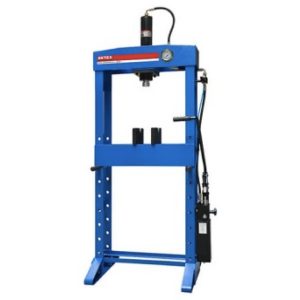Hydraulic presses are essential tools in workshops, serving a variety of assembly and disassembly tasks. These presses are designed to cater to a wide range of force requirements, from 10 to 300 tons, making them indispensable for workshops of all sizes. They offer flexibility in operation, with models available for hand or foot activation, as well as powered by electrical or air-hydraulic pumps. Their construction emphasizes durability and reliability, utilizing robust steel frames to withstand heavy usage.
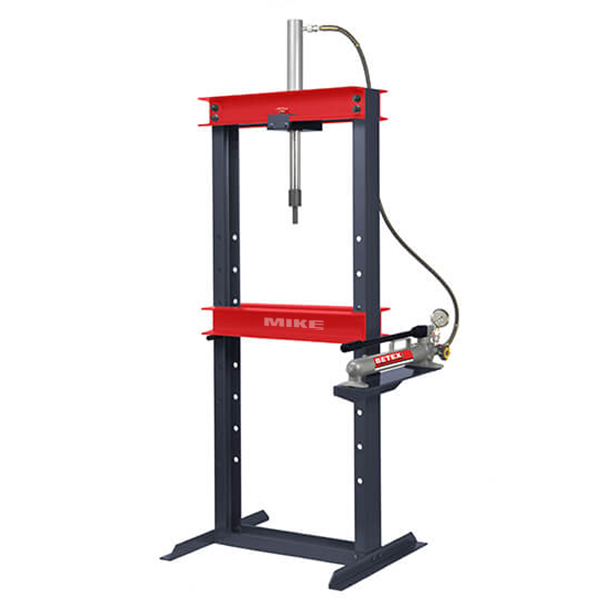 |
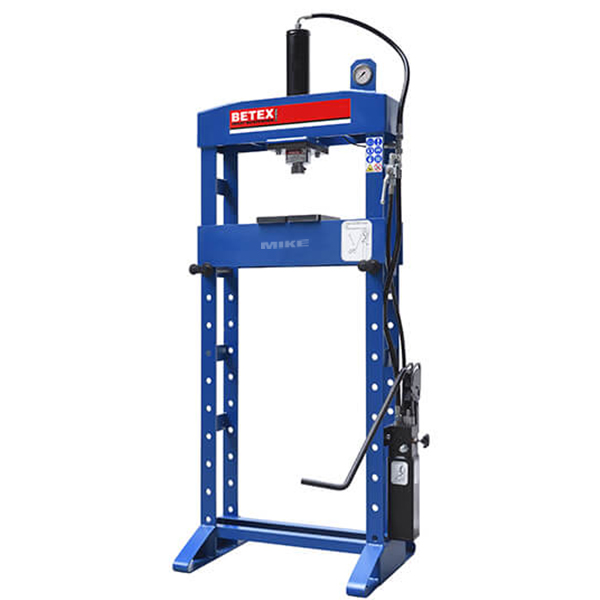 |
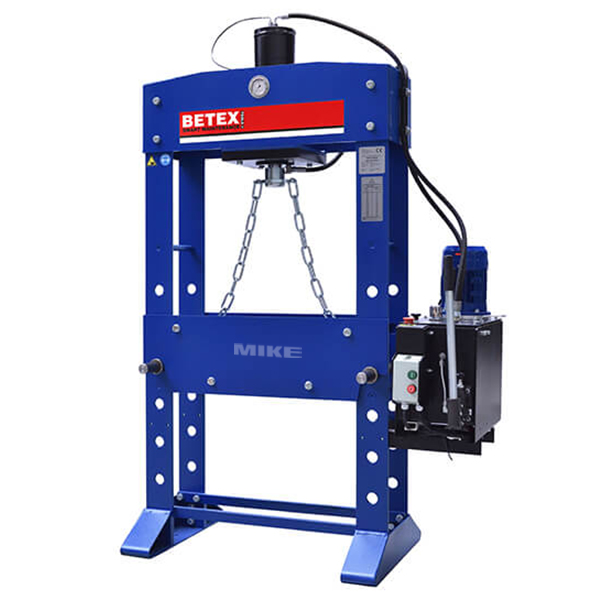 |
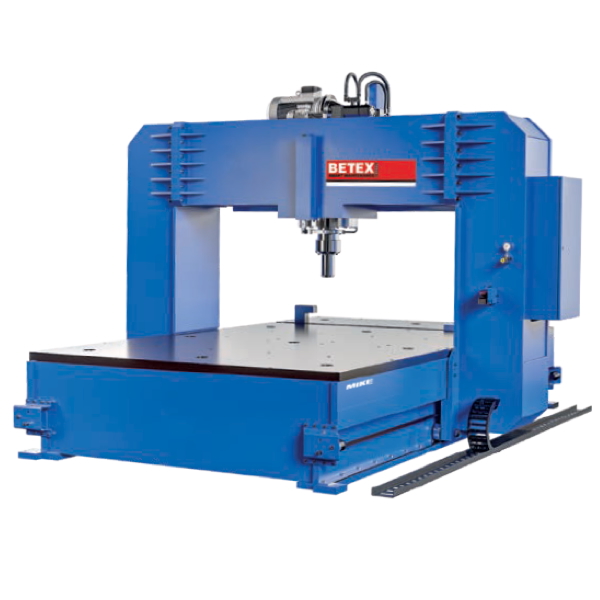 |
| WSP 10 tons | WSPM 15 tons | WSPE 30 tons | PFPE 220 tons |
The BETEX WSP series includes models with capacities of 10 and 25 tons, showcasing manual, air, and electric pump options. Each model features a 250 mm stroke length, and their design prioritizes stability and precision. The presses are equipped with steel crossbars and a gauge for accurate force control, along with a moveable single acting spring return cylinder. They also provide various working positions for the press bed, enhancing their versatility. Accessories and adaptors further extend their utility.
| Product ID | Model | Capacity (Tons) |
Stroke (mm) |
Operation | Weight (kg) |
|---|---|---|---|---|---|
| 7511301 | BETEX WSP 10 | 10 | 250 | Manual | 87 |
| 7511302 | BETEX WSPA 10 | 10 | 250 | Air | 88 |
| 7511401 | BETEX WSP 10HD | 10 | 250 | Manual | 87 |
| 7511402 | BETEX WSPA 10HD | 10 | 250 | Air | 88 |
| 7511403 | BETEX WSPE 10HD | 10 | 250 | Electric | 90 |
| 7512201 | BETEX WSP 25 | 25 | 250 | Manual | 145 |
| 7512202 | BETEX WSPA 25 | 25 | 250 | Air | 146 |
| 7512203 | BETEX WSPE 25 | 25 | 250 | Electric | 148 |
| 7513001 | BETEX WSPM15 | 15 | 160 | Hand/Foot | 117 |
| 7513002 | BETEX WSPM30 | 30 | 160 | Hand/Foot | 165 |
| 7513003 | BETEX WSPM50 | 50 | 160 | Hand/Foot | 340 |
| 7513004 | BETEX WSPE30 | 30 | 380 | Electric | 385 |
| 7513005 | BETEX WSPE60 | 60 | 380 | Electric | 540 |
| 7513006 | BETEX WSPE100 | 100 | 380 | Electric | 970 |
| 7513007 | BETEX WSPE160 | 160 | 400 | Electric | 1195 |
| 7513008 | BETEX WSPE100 | 100 | 380 | Electric | 970 |
| 7513009 | BETEX WSPE160 | 160 | 400 | Electric | 1430 |
| 7513010 | BETEX WSPE200 | 200 | 400 | Electric | 1690 |
| 7513011 | BETEX WSPE300 | 300 | 480 | Electric | 3150 |
| 7513024 | BETEX PFPE100 | 100 | 380 | Manual/Electric | 1650 |
| 7513025 | BETEX PFPE160 | 160 | 400 | Manual/Electric | 2185 |
| 7513013 | BETEX PFPE150 | 150 | 450 | Electric | 6500 |
| 7513014 | BETEX PFPE220 | 220 | 450 | Electric | 13000 |
| 7513015 | BETEX PFPE300 | 300 | 450 | Electric | 16000 |
For more specialized needs, the BETEX WSPM series offers hand or foot-operated presses in 15, 30, and 50 ton capacities, suitable for professional assembly work and component testing. These models stand out for their quality and precision, featuring welded steel frames for longevity, easy height adjustment of the worktable, and a hoist in the 50-ton version.
The BETEX WSPE electric series expands the range up to 300 tons, designed for general assembly, straightening, and testing. These electric hydraulic presses are characterized by their two-speed piston operation, which automatically adjusts based on counter pressure, and their chrome-plated piston with automatic return. They also offer joystick control for precise piston movement, making them ideal for high-precision tasks.
Hydraulic Press Machine BETEX
Additionally, the BETEX PFPE portal presses, available in both electric and manual models, are tailored for shaping, straightening, or bending large sheets and heavy materials. With the ability to move the frame and cylinder for comprehensive access, these presses meet the demands of heavy-duty operations. Their construction from high-grade steel ensures durability, while the equipped double-acting cylinder with anti-wear guideways enhances their operational lifespan.
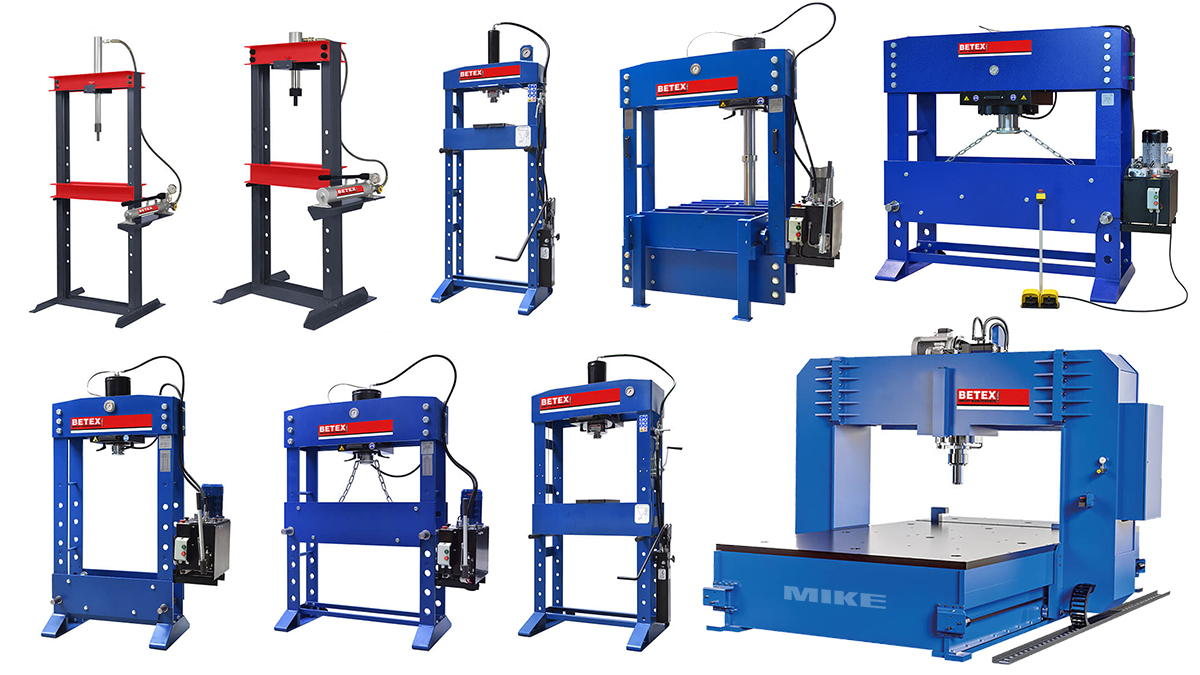
This overview demonstrates the comprehensive range and capability of hydraulic presses available, highlighting their essential role in workshops for a broad spectrum of tasks from assembly to material handling and testing.
Choosing the right hydraulic press machine for your workshop involves considering several key factors to ensure you select a model that meets your requirements for efficiency, precision, and reliability. Here’s a guide to help you make an informed decision:
1. Determine Your Capacity Needs
The first step in selecting a hydraulic press is to assess the maximum force you’ll need. This is typically measured in tons. Hydraulic presses can range from small 10-ton models suitable for light tasks to powerful 300-ton machines for heavy-duty operations. Consider the tasks you plan to perform, such as pressing, bending, or forming, and choose a capacity that exceeds your maximum requirement to ensure versatility and longevity of the machine.
2. Consider the Stroke Length
The stroke length of a hydraulic press determines how far the press plate or ram can move. This is crucial for accommodating different sizes of materials and for performing a variety of tasks. Make sure the stroke length of the press you choose is suitable for the work you intend to do.
3. Select the Operation Type
Hydraulic presses can be operated manually, pneumatically (air-powered), electrically, or through a combination of methods. Manual presses require physical labor but offer simplicity and control. Pneumatic presses are faster and require less manual effort. Electric presses offer the best consistency and efficiency, especially for repetitive tasks. Consider the nature of your work and the environment in which you’ll be working to decide on the best operation type.
4. Examine the Frame Construction
The durability and stability of a hydraulic press are largely determined by its frame construction. Look for presses with robust steel frames that can withstand the pressures of daily use without bending or breaking. A well-constructed frame ensures the longevity and safety of the machine.
5. Check for Adjustability and Accessories
The ability to adjust the worktable and ram, and the availability of different accessories, can significantly expand the capabilities of your hydraulic press. Models that offer multiple working positions, adjustable stroke limits, and include accessories like V-blocks or mandrel sets provide greater versatility and value.
6. Assess Precision and Control Features
For tasks that require high precision, consider presses with features that offer greater control over the pressing force and stroke distance. Gauges for monitoring pressure, adjustable speed settings, and joystick controls can help ensure accurate and consistent results.
7. Safety Features
Safety should be a top priority when selecting a hydraulic press. Look for machines with built-in safety features such as emergency stop buttons, protective guards, and pressure relief valves to protect operators from accidents.
8. After-Sales Support and Warranty
Good after-sales support can be invaluable, especially for high-usage or complex machinery. Check the warranty period and the manufacturer’s reputation for customer service. Access to technical support, spare parts, and maintenance services can be crucial for keeping your hydraulic press in optimal working condition.
By carefully considering these factors, you can select a hydraulic press machine that not only meets your current needs but also offers the flexibility to accommodate future projects. Remember, investing in the right equipment can enhance your workshop’s capabilities, improve efficiency, and ensure the quality and precision of your work.
Hydraulic Press Machine
Showing the single result

